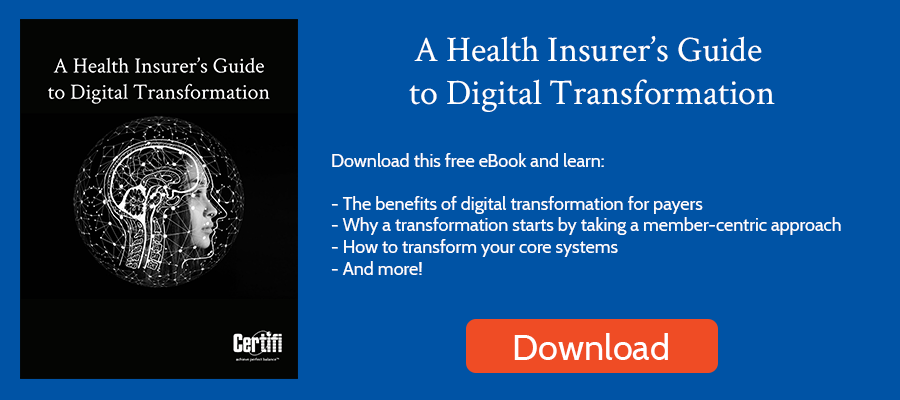Artificial Intelligence (AI) has long been touted as having the potential to significantly change the healthcare industry. From helping payers automate processes and streamline the business to enabling providers to improve performance, healthcare organizations have begun to make significant investments in AI.
They aren’t alone. The US Health and Human Services Department (HHS) recently released their own AI strategy document designed to improve AI fluency and accelerate AI-centered aims. Also, the agency promoted Oki Mek to become the agency’s first AI officer.
What is HHS?
Before we dig into the strategy, a quick look at HHS. HHS is an executive branch department of the US federal government whose aim is to protect the health of all Americans as well as provide essential human services. In fact, HHS administers more than 100 programs across its operating divisions, which include high-profile agencies like the Centers for Disease Control and Prevention (CDC), Centers for Medicare and Medicaid Services (CMS), the Food and Drug Administration (FDA), the National Institutes of Health (NIH) and Substance Abuse and Mental Health Services Administration (SAMHSA). Overall, HHS has a budget exceeding $1.25 trillion.
Obviously, HHS plays a significant role in defining US public health initiatives and strategies. Creating an overarching AI strategy for the department helps the agency address today’s health needs. But it also better positions the agency for the future when AI is much more prevalent.
Here’s a look at the overarching goals expressed in the AI strategy document:
The AI Council
First, the department will create a new AI Council. Though it’s unclear who will sit on the council, the council has two primary responsibilities:
- Communicate HHS’ AI vision
- Execute the Department’s AI strategy
To achieve these goals, the Council will be tasked with setting and executing priorities, building partnerships across the department and with private organizations to advance innovative AI solutions, deliver governance support, and sponsor a Community of Practice at all employee levels throughout HHS. That community will include practitioners like data scientists, machine learning specialists, mathematicians, system developers, computer programmers, solution architects, and others. The goal of the community is to share results across HHS, deliver peer guidance, and share access to tools, resources, and best practices.
As we’ve seen, HHS is an enormous organization. So merely implementing a council to oversee the implementation of governance of an AI strategy isn’t nearly enough to foment the transition to a more AI-centric organization. Building a Community of Practice to reach across disparate departments, practices, and organizational levels will help HHS better drive this AI strategy throughout the organization.
The Four Pillars of the Strategy
In addition to creating an AI Council, the AI strategy document outlined four key aims of HHS’ AI strategy:
Improve the HHS Workforce and Culture Around AI
Leveraging the power of AI requires a significant degree of knowledge. Practitioners need to understand the particular domain to which AI is being applied as well as knowledge of available AI tools and resources. To attain that knowledge — the document calls it AI fluency — HHS intends to cultivate the AI skills required. HHS also plans to create a culture of rigor, collaboration, and innovation around AI. Finally, they expect to better communicate across the department the problems that AI can and is solving. HHS also aims to bring more visibility to AI projects and workshops in the hope of helping employees discover more use cases to further projects.
In many regards, creating a culture that embraces AI is a lot like the digital transformation many businesses have experienced in the past. It’s a significant cultural shift that will take time and resources to achieve HHS’s vision for an AI-centric culture.
Encourage Health AI Innovation and R&D
HHS is the largest grant-making agency in the federal government, so it funds thousands of research projects. As a result, HHS can uniquely encourage recipients to leverage AI in their projects and could prioritize projects that use AI.
But HHS wants to do more than just promote AI in grant programs. The department plans to prioritize outreach to academia, the private sector, and government entities. HHS will also more rigorously track internal AI initiatives and prioritize those that advance the health of Americans. Another aim: to identify gaps where AI isn’t being applied and create public-private partnerships to introduce AI-based solutions.
Democratize AI Tools and Resources
To leverage AI, HHS needs an AI-savvy workforce and culture. But it also requires the appropriate AI tools and resources. HHS foresees the Community of Practice as a significant component of democratizing the use of AI. But it also requires the department to more effectively communicate currently available tools, resources, use cases, and projects.
Promote Trustworthy AI Use and Development
Prominent scientists and others have pointed to the ethical flaws of misusing AI. As a result, there is still some distrust of AI. To help counteract that distrust, HHS plans to support the deployment of reliable, explainable, non-biased AI. They also plan to promote AI that respects consumer privacy and data security. A significant aspect of trustworthy AI development will be achieved through the development of principles and policies that can be followed to promote ethical AI. Finally, HHS plans to promote the evaluation of applied AI for accuracy, effectiveness, and health equity.
Overall, organizations looking to effectively build a culture more attuned to AI should mimic HHS’s AI strategy document. It’s a significant shift for most businesses, but by documenting your vision, your core goals, and the ways you plan to achieve those AI goals you’ll be able to better ideate on the tasks, activities, and tactics you’ll need to create to get there.
Certifi’s health insurance premium billing and payment solutions help healthcare payers improve member satisfaction while reducing administrative costs.



